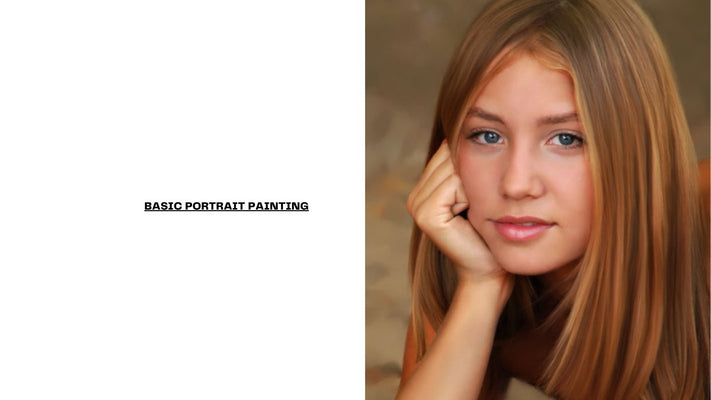How to Use Corel Painter’s Surface Texture Tool
Originally Published May 2009
Corel Painter and Adobe Photoshop both have a tool which applies the appearance of texture to your image. The result is a 2D image that looks like it’s on canvas or rough charcoal paper. Most of the time, I prefer to print the final image on canvas, so I don’t use the texture tools.

But recently, I was working on a portrait that really needed a feeling of texture, but just in certain areas. Also, the mood and lighting wasn’t quite what I wanted. Luckily for me, Corel Painter has a tool called Apply Surface Texture, and it can apply a texture and change the lighting somewhat. So let’s take a look at how it works.

I painted the hood in this portrait using a very soft brush, and the result is that the hood has almost no texture. I could spend hours worked over it with a fine brush to work up a cloth texture, but instead I’ll use a custom paper I already have created, and use that in Painter’s Surface Texture tool. I’d also like to deepen the mysterious mood more, and the tool has lighting built into it, so that may do the trick.
The Texturizing Process
Since I’m only going to use the texturizer on part of the image, I’ll duplicate the image onto a layer, and make my changes there. I’ll actually texturize the whole image, and then erase the face, so that the original version shows through. To copy the base (Canvas) layer, do Select > All, then Edit > Copy, and finally Edit > Paste in Place. This creates a duplicate layer on top of the canvas layer. Next, you’ll need to select a paper as your texture. If the paper palette isn’t visible, go Window > Library Palettes > Show Papers. Choose a good high-contrast paper. I used one I created from a photo of a canvas, but you can use any paper you like. It doesn’t necessarily have to have “cloth” or “fabric” in the title. Click on the drop-down, as shown below, to access the different papers. Note the slider for the scale of the paper texture. You’ll adjust this later while working in the Surface Texture tool. They work together.

One key concept here is that the Surface Texture tool uses the paper settings from the Papers palette. So you need to tweak both dialogues at the same time. Once you’ve got your paper selected, you’re ready to apply the texture. Go Effects > Surface Control > Apply Surface Texture. The following dialogue pops up.

Choose “Using: Paper,” in order to use the paper you chose earlier. Follow the other settings as shown, and feel free to experiment. You’ll find that a little goes a long way in the Surface Texture tool. Click in the preview window, and your cursor becomes a hand, allowing you to navigate a bit to see how the settings look. I find that the results don’t look much like the preview, for some reason. So it’s a process of apply (click the Ok button), then Undo and tweak, and try again. Remember to adjust the size of your texture using the slider in the Papers palette (see above). You don’t need to use the lighting controls at all, though they are always active. What I mean is, you can leave them as is. For my purposes, the lighting is my next stop. I choose a light blue (again: a little goes a long way). I moved the light source towards the right, to match my picture. Once you’re ready to run the tool, click Ok.

So now I’ve applied the Surface Texture to the entire image, on the duplicate layer. Since I only want to apply the texture to the hood, I will simply use the Eraser to remove the face area from the top layer. Use a soft eraser (note the two icons in the tool bar, one for soft, one for hard). You could also use a layer mask, instead, which is non-destructive. As I erased, I decided to leave the right side of her face shadowed a bit. This makes it look like a beam or spot is lighting her. Here’s the result:












